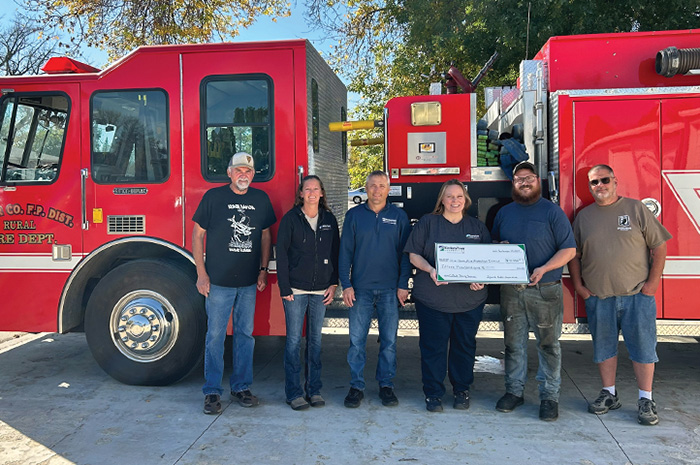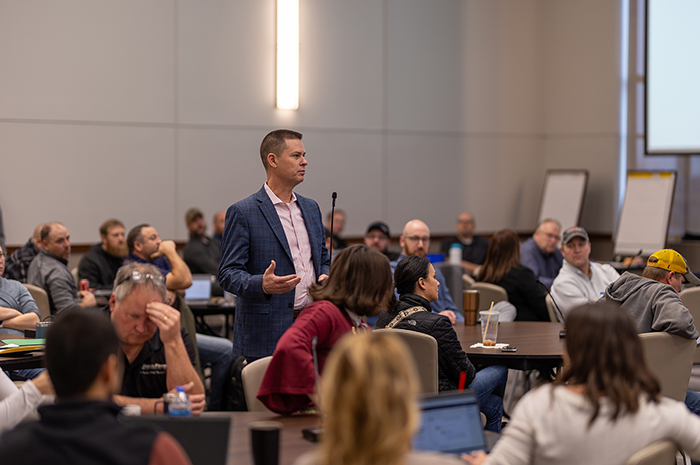'The math does not add up' on EPA carbon proposal
A new EPA power plant proposal could put grid reliability at risk.
This summer, the Environmental Protection Agency rolled out new regulations for power plants that, if enacted as proposed, will accelerate grid reliability issues and threaten the affordability of electricity across the nation.
Minnkota Power Cooperative and its industry partners issued comments to EPA in August about the unworkable timelines and requirements in its most recent proposals to regulate greenhouse gas emissions from both coal and natural gas power plants. Utilities would be required to implement carbon capture and hydrogen technologies that are promising but not yet commercially available, especially on an unreasonably expedited timeframe. This threatens to push more baseload and dispatchable plants offline in the next decade as the risk of electric grid instability and blackout issues continue to grow.
“Although Minnkota supports investment in carbon capture and storage (CCS) technology, the proposed rule overstates the technology’s current and future capabilities as well as the timeline in which CCS can feasibly be deployed,” said Shannon Mikula, Minnkota’s environmental manager.
The rule requires that coal-based power plants be retrofitted with CCS technology by 2030 or consider various options leading to closure. Natural gas power plants are also required to install CCS, which has never been done on a gas plant before, or co-fire with low-carbon hydrogen, which currently has no reliable supply or transportation infrastructure. Some exceptions are available for peaking gas plants, which operate a limited number of hours each year.
EPA is expected to finalize its proposed power plant rule in the spring of 2024. It is anticipated that the final rule will be subject to significant litigation.

What about Project Tundra?
In 2015, the Obama Administration released the Clean Power Plan, the first-ever rule to regulate carbon dioxide (CO2) emissions from power plants. That rule was stayed by the U.S. Supreme Court and ultimately never implemented. The Trump Administration replaced the Clean Power Plan with the Affordable Clean Energy rule, which also faced litigation and was never implemented. Minnkota has responded to these rulemakings by working to develop Project Tundra – one of the world’s largest CCS projects at the coal-based Milton R. Young Station. During this time, Congress enhanced tax credits in 2018 and 2022 to incentivize CCS project development. Financing for the project is largely made possible through federal 45Q tax credits, which provide $85 per ton of CO2 that is permanently stored.
“Despite all the regulatory uncertainty, our board and staff have committed to the view that we are going to live in a carbon-managed world and we’ll need to develop technologies and strategies to help us navigate this challenge,” said Mac McLennan, Minnkota president and CEO. “We want to be part of the solution, but there needs to be an understanding that America’s electric grid can’t be completely transformed overnight.”
After nine years of development, Minnkota is nearing a final decision on Project Tundra in 2024. Minnkota continues to assess how the project might work as a compliance strategy with the EPA proposal.
“Project Tundra benefits from strong local, state and federal support, along with ideal geology for CO2 storage directly beneath the power plant site,” McLennan said. “Not every coal plant is equipped with these resources and it will be near impossible for another utility to start from scratch and develop its own unique CCS system on the timeline provided under this proposal.”
Minnkota, grid operators express concern
Reliability has been and always will be essential to Minnkota and its member cooperatives’ mission. Regulators, lawmakers and grid operators have articulated rising fears of a reliability crisis, which will be further exacerbated by the EPA proposal. According to the North American Electric Reliability Corporation, the “disorderly” retirement of existing generating assets across the country, and insufficient replacement of that power capacity, is directly impacting reliability and increasing the risk of blackouts.

“The math does not add up,” Mikula said. “Dispatchable generation is retiring faster than replacement resources are coming online. In the MISO region where Minnkota operates, the dearth of dispatchable resources is well-documented and places the entire region on a heightened capacity shortage alert.”
MISO joined with the other major grid operators across the U.S. to issue public comments to EPA stating they “are concerned that the proposed rule could result in material, adverse impacts to the reliability of the power grid.”
“If the technology and associated infrastructure fail to timely materialize, then the future supply of compliant generation — given forced retirements of non-compliant generation — would be far below what is needed to serve power demand, increasing the likelihood of significant power shortages,” the grid operators said.
More regulations in process
Minnkota and its industry partners also issued comments in June on EPA’s proposal to further regulate mercury and particulate matter emissions from power plants. While Minnkota has robust systems in place at the Young Station to significantly reduce these emissions, the rules would require additional cost for near unquantifiable benefits.
EPA is expected to issue its final rule in 2024. Again, the end result would be more reliable power plants being forced offline when America’s electric grid needs them most.
“People use the phrase ‘keeping the lights on,’ but it’s so much more than that,” McLennan said. “It’s keeping families warm in the winter, helping American businesses stay competitive, ensuring hospitals and essential resources are available at all times and protecting our national security. These are things that depend on a reliable electric grid and we should take that seriously.”
...



